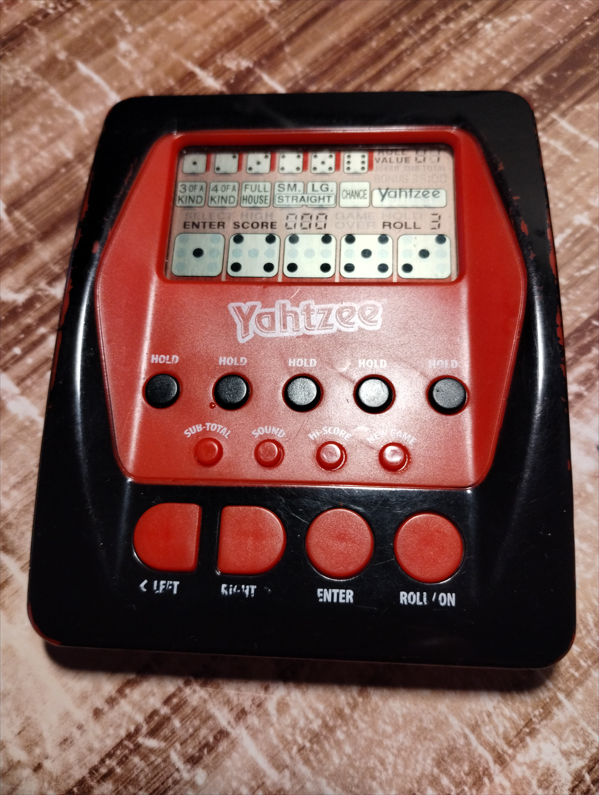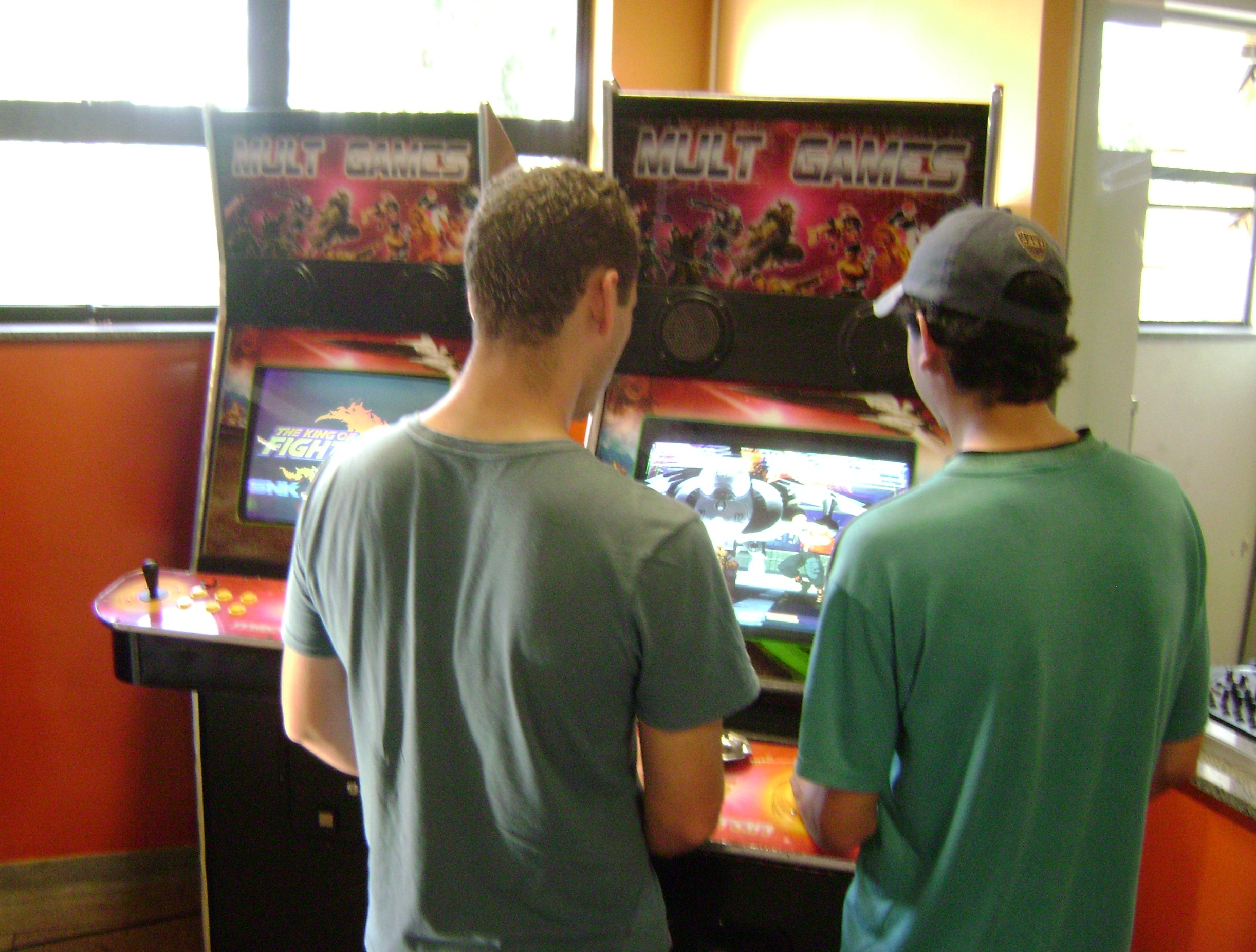|
Phoenix (arcade Game)
is a fixed shooter arcade video game released in December 1980 by Taito. It was then released in Europe, and then in the Americas by Centuri and Amstar Electronics in January 1981. The ''Phoenix'' mothership is one of the first video arcade game bosses to be presented as a separate challenge.Sterbakov, Hugh. (2008-03-05The 47 Most Diabolical Video-Game Villains of All Time GamePro. Retrieved on 2008-04-28. It was a critical and commercial success, becoming one of Centuri's most successful titles. Gameplay The player controls a spaceship that moves horizontally at the bottom of the screen, firing upward. Enemies, typically one of two types of birds, appear on the screen above the player's ship, shooting at it and periodically diving towards it in an attempt to crash into it. The ship is equipped with a shield that can be used to zap any of the alien creatures that attempt to crash into it. The player cannot move while the shield is active and must wait approximately five se ... [...More Info...] [...Related Items...] OR: [Wikipedia] [Google] [Baidu] |
Taito
is a Japanese company that specializes in video games, toys, arcade cabinets and game centers, based in Shinjuku, Tokyo. The company was founded by Michael Kogan in 1953 as the importing vodka, vending machines and jukeboxes into Japan. It began production of video games in 1973. In 2005, Taito was purchased by Square Enix, becoming a wholly owned subsidiary by 2006. Taito is recognized as an important industry influencer in the early days of video games, producing a number of hit arcade games such as '' Speed Race'' (1974), '' Western Gun'' (1975), '' Space Invaders'' (1978), '' Bubble Bobble'' (1986) and '' Arkanoid'' (1986). Alongside Capcom, Konami, Namco and Sega, it is one of the most prominent video game companies from Japan and the first that exported its games into other countries. Several of its games have since been recognized as important and revolutionary for the industry - ''Space Invaders'' in particular was a major contributor to the growth of video gam ... [...More Info...] [...Related Items...] OR: [Wikipedia] [Google] [Baidu] |
Phoenix, Arizona
Phoenix ( ; nv, Hoozdo; es, Fénix or , yuf-x-wal, Banyà:nyuwá) is the List of capitals in the United States, capital and List of cities and towns in Arizona#List of cities and towns, most populous city of the U.S. state of Arizona, with 1,608,139 residents as of 2020. It is the List of United States cities by population, fifth-most populous city in the United States, and the only U.S. state capital with a population of more than one million residents. Phoenix is the anchor of the Phoenix metropolitan area, also known as the Valley of the Sun, which in turn is part of the Salt River Valley. The metropolitan area is the 11th largest by population in the United States, with approximately 4.85 million people . Phoenix, the seat of Maricopa County, Arizona, Maricopa County, has the largest area of all cities in Arizona, with an area of , and is also the List of United States cities by area, 11th largest city by area in the United States. It is the largest metropolitan area, bo ... [...More Info...] [...Related Items...] OR: [Wikipedia] [Google] [Baidu] |
Arkie Awards
An electronic game is a game that uses electronics to create an interactive system with which a player can play. Video games are the most common form today, and for this reason the two terms are often used interchangeably. There are other common forms of electronic game including handheld electronic games, standalone systems (e.g. pinball, slot machines, or electro-mechanical arcade games), and exclusively non-visual products (e.g. audio games). Teletype games The earliest form of computer game to achieve any degree of mainstream use was the text-based Teletype game. Teletype games lack video display screens and instead present the game to the player by printing a series of characters on paper which the player reads as it emerges from the platen. Practically this means that each action taken will require a line of paper and thus a hard-copy record of the game remains after it has been played. This naturally tends to reduce the size of the gaming universe or alternatively to requi ... [...More Info...] [...Related Items...] OR: [Wikipedia] [Google] [Baidu] |
Computer And Video Games
''Computer and Video Games'' (also known as ''CVG'', ''Computer & Video Games'', ''C&VG'', ''Computer + Video Games'', or ''C+VG'') was a UK-based video game magazine, published in its original form between 1981 and 2004. Its offshoot website was launched in 1999 and closed in February 2015. ''CVG'' was the longest-running video game media brand in the world. History ''Computer and Video Games'' was established in 1981, being the first British games magazine. Initially published monthly between November 1981 and October 2004 and solely web-based from 2004 onwards, the magazine was one of the first publications to capitalise on the growing home computing market, although it also covered arcade games. At the time of launch it was the world's first dedicated video games magazine. The first issue featured articles on '' Space Invaders'', Chess, Othello and advice on how to learn programming. The magazine had a typical ABC of 106,000. Website Launched in August 1999, CVG was o ... [...More Info...] [...Related Items...] OR: [Wikipedia] [Google] [Baidu] |
Electronic Games
An electronic game is a game that uses electronics to create an interactive system with which a player can play. Video games are the most common form today, and for this reason the two terms are often used interchangeably. There are other common forms of electronic game including handheld electronic games, standalone systems (e.g. pinball, slot machines, or electro-mechanical arcade games), and exclusively non-visual products (e.g. audio games). Teletype games The earliest form of computer game to achieve any degree of mainstream use was the text-based Teletype game. Teletype games lack video display screens and instead present the game to the player by printing a series of characters on paper which the player reads as it emerges from the platen. Practically this means that each action taken will require a line of paper and thus a hard-copy record of the game remains after it has been played. This naturally tends to reduce the size of the gaming universe or alternatively to req ... [...More Info...] [...Related Items...] OR: [Wikipedia] [Google] [Baidu] |
Bill Kunkel (journalist)
Bill Kunkel (July 21, 1950 – September 4, 2011) was a graphic novelist as well as pioneering professional wrestling and video game journalist and critic from the 1970s until his death in the early 2010s. During his time working with the video game industry, Kunkel authored numerous strategy guides, co-designed several video games, served as an expert witness in three court cases, and taught courses in Game Design for the University of Nevada, Las Vegas (UNLV). Kunkel served as the executive editor of ''Electronic Games Magazine'' and the editor-in-chief of ''Tips & Tricks'' magazine, writing columns and comics for several magazines and game sites. He often wrote under nicknames, the most common of which were "The Game Doctor" (for video game topics), and "Potshot" (for professional wrestling topics). Graphic novels and zines Coming from a professional music background in the 1960s, Kunkel met and became friends with fan newsletter/fanzine writers Arnie Katz and Joyce Worley i ... [...More Info...] [...Related Items...] OR: [Wikipedia] [Google] [Baidu] |
Beethoven
Ludwig van Beethoven (baptised 17 December 177026 March 1827) was a German composer and pianist. Beethoven remains one of the most admired composers in the history of Western music; his works rank amongst the most performed of the classical music repertoire and span the transition from the Classical period to the Romantic era in classical music. His career has conventionally been divided into early, middle, and late periods. His early period, during which he forged his craft, is typically considered to have lasted until 1802. From 1802 to around 1812, his middle period showed an individual development from the styles of Joseph Haydn and Wolfgang Amadeus Mozart, and is sometimes characterized as heroic. During this time, he began to grow increasingly deaf. In his late period, from 1812 to 1827, he extended his innovations in musical form and expression. Beethoven was born in Bonn. His musical talent was obvious at an early age. He was initially harshly and intensivel ... [...More Info...] [...Related Items...] OR: [Wikipedia] [Google] [Baidu] |
Für Elise
Bagatelle No. 25 in A minor ( WoO59, Bia515) for solo piano, commonly known as "Für Elise" (, ), is one of Ludwig van Beethoven's most popular compositions. It was not published during his lifetime, only being discovered (by Ludwig Nohl) 40 years after his death, and may be termed either a ''Bagatelle'' or an . The identity of "Elise" is unknown; researchers have suggested Therese Malfatti, Elisabeth Röckel, or Elise Barensfeld. History The score was not published until 1867, forty years after the composer's death in 1827. The discoverer of the piece, Ludwig Nohl, affirmed that the original autograph manuscript, now lost, had the title: "Für Elise am 27 April 810zur Erinnerung von L. v. Bthvn" ("For Elise on April 27 in memory by L. v. Bthvn"). The music was published as part of Nohl's ''Neue Briefe Beethovens'' (New letters by Beethoven) on pages 28 to 33, printed in Stuttgart by Johann Friedrich Cotta. The version of "Für Elise" heard today is an earlier version tha ... [...More Info...] [...Related Items...] OR: [Wikipedia] [Google] [Baidu] |
Romance (guitar Piece)
"Romance Anónimo" (''Anonymous Romance'') is a piece for guitar, also known as "Estudio en Mi de Rubira" (''Study in E by Rubira''), "Spanish Romance", "Romance de España", "Romance de Amor", "Romance of the Guitar", "Romanza" and "Romance d'Amour" among other names. Its origins and authorship are currently in question. It is suspected of originally being a solo instrumental guitar work, from the 19th century. It has variously been attributed to Antonio Rubira, David del Castillo,Sobre el Romance (mentioning David del Castillo) by Juan Dotras. The work in question is not the one with similar title, calle "Romance sans paroles" |
Bezel (screen)
A display device is an output device for presentation of information in visual or tactile form (the latter used for example in tactile electronic displays for blind people). When the input information that is supplied has an electrical signal the display is called an ''electronic display''. Common applications for ''electronic visual displays'' are television sets or computer monitors. Types of electronic displays In use These are the technologies used to create the various displays in use today. * Liquid crystal display (LCD) ** Light-emitting diode (LED) backlit LCD ** Thin-film transistor (TFT) LCD ** Quantum dot (QLED) display * Light-emitting diode (LED) display ** OLED display ** AMOLED display ** Super AMOLED display Segment displays Some displays can show only digits or alphanumeric characters. They are called segment displays, because they are composed of several segments that switch on and off to give appearance of desired glyph. The segments are usu ... [...More Info...] [...Related Items...] OR: [Wikipedia] [Google] [Baidu] |
Arcade Cabinet
An arcade cabinet, also known as an arcade machine or a coin-op cabinet or coin-op machine, is the housing within which an arcade game's electronic hardware resides. Most cabinets designed since the mid-1980s conform to the Japanese Amusement Machine Manufacturers Association (JAMMA) wiring standard. Some include additional connectors for features not included in the standard. Parts of an arcade cabinet Because arcade cabinets vary according to the games they were built for or contain, they may not possess all of the parts listed below: *A display output, on which the game is displayed. They may display either raster or vector graphics, raster being most common. Standard resolution is between 262.5 and 315 vertical lines, depending on the refresh rate (usually between 50 and 60 Hz). Slower refresh rates allow for better vertical resolution. Monitors may be oriented horizontally or vertically, depending on the game. Some games use more than one monitor. Some newer cabinets ... [...More Info...] [...Related Items...] OR: [Wikipedia] [Google] [Baidu] |






